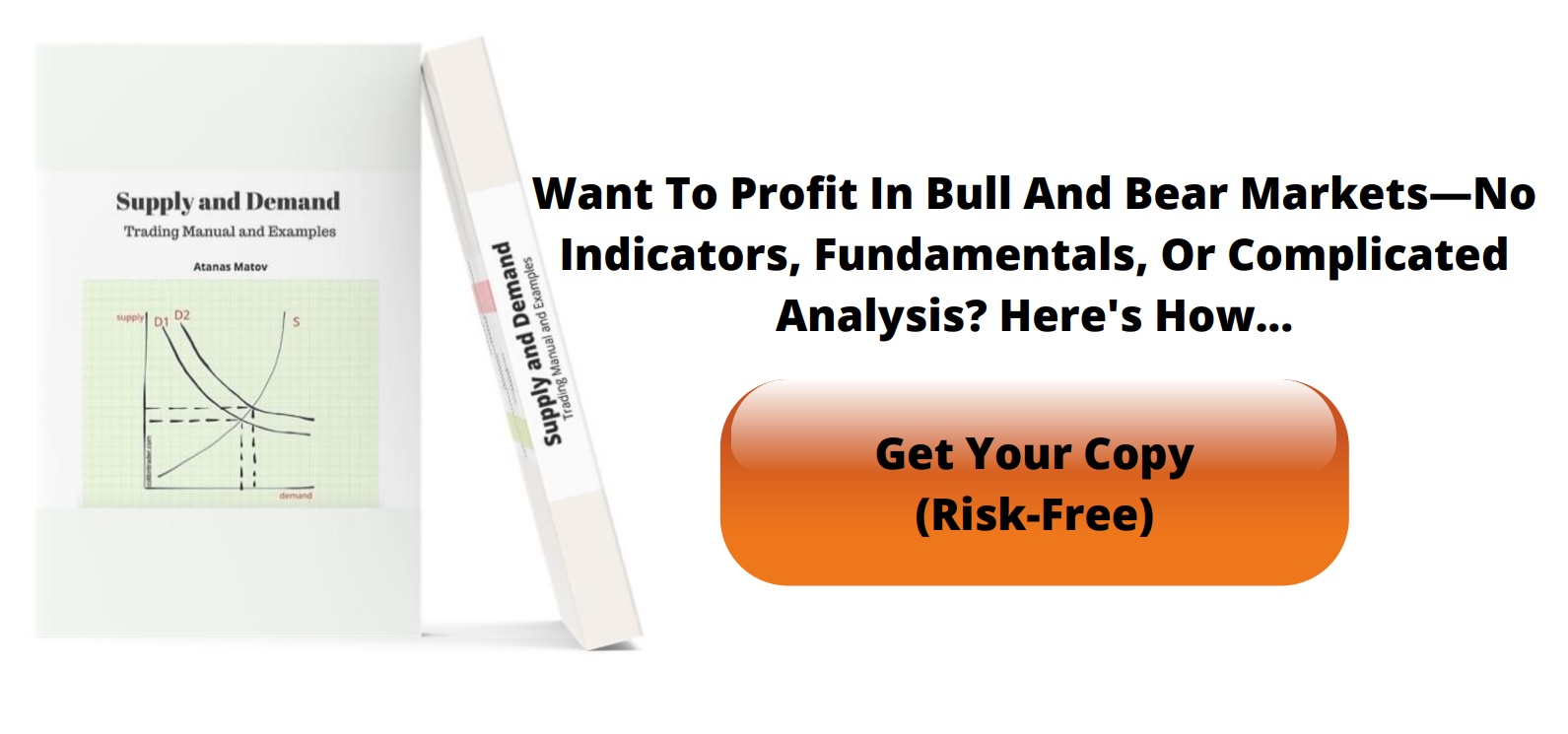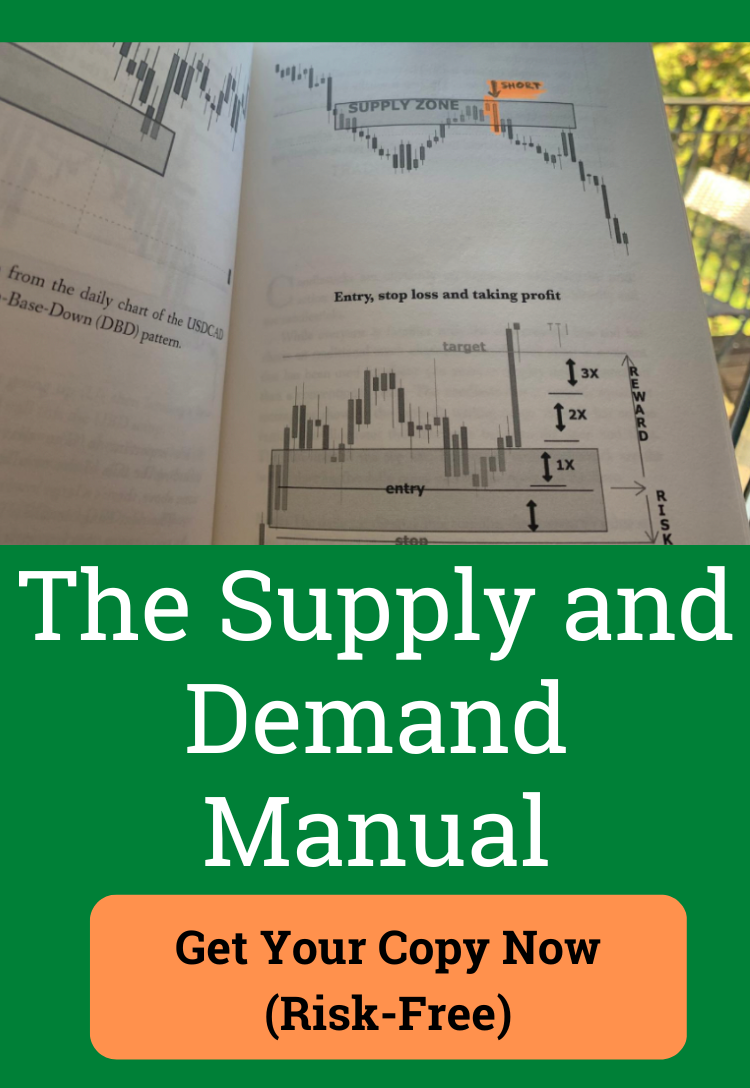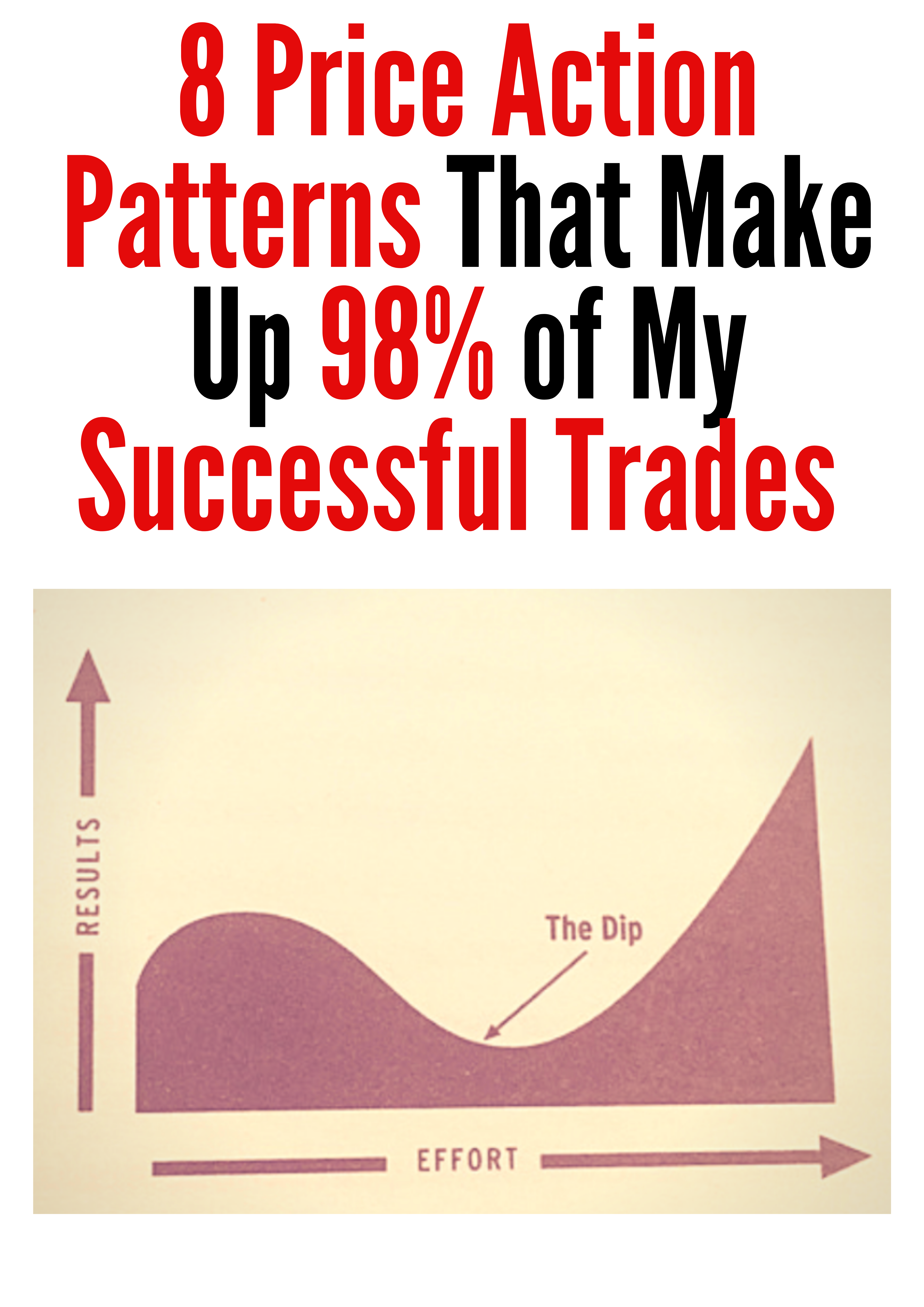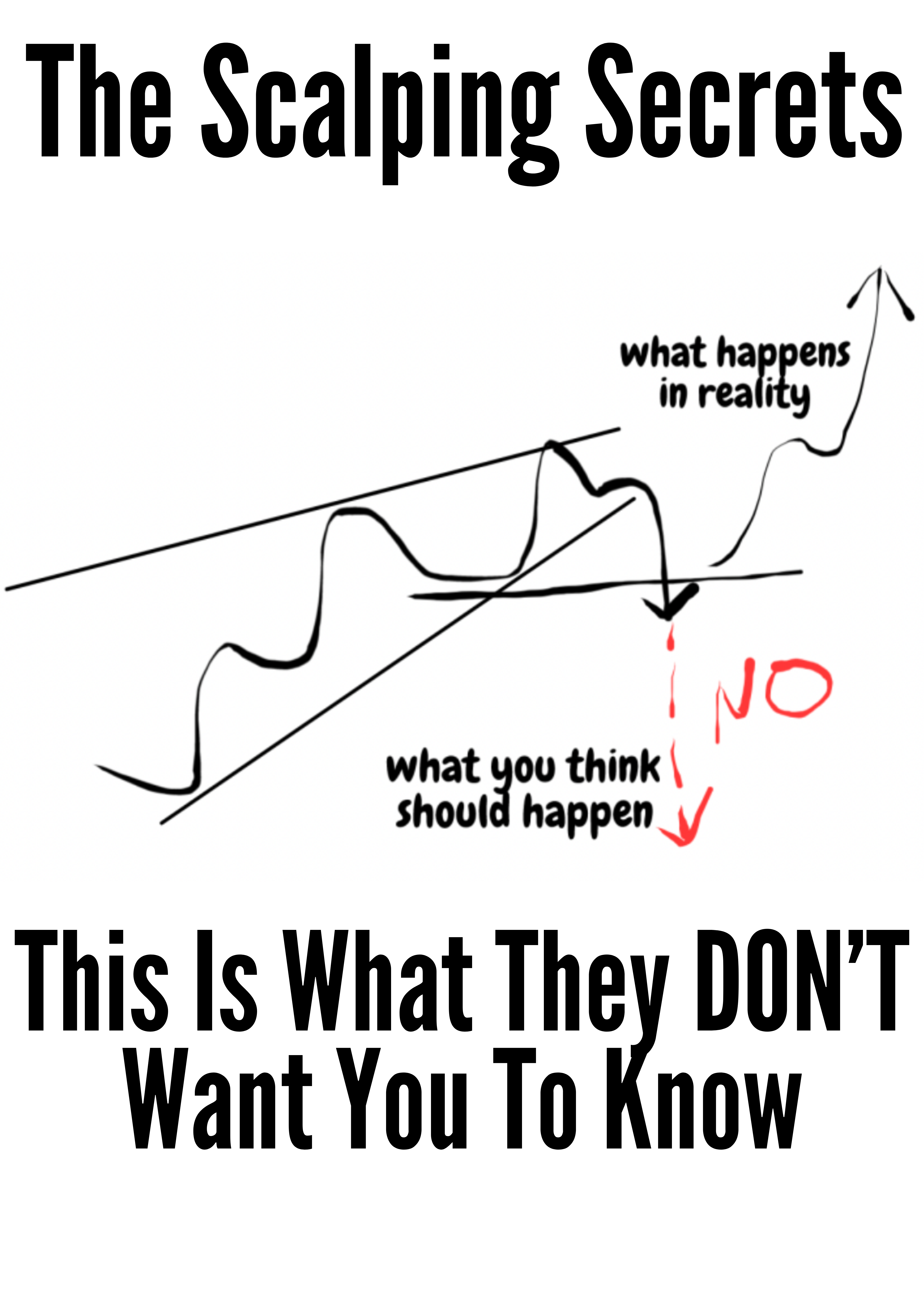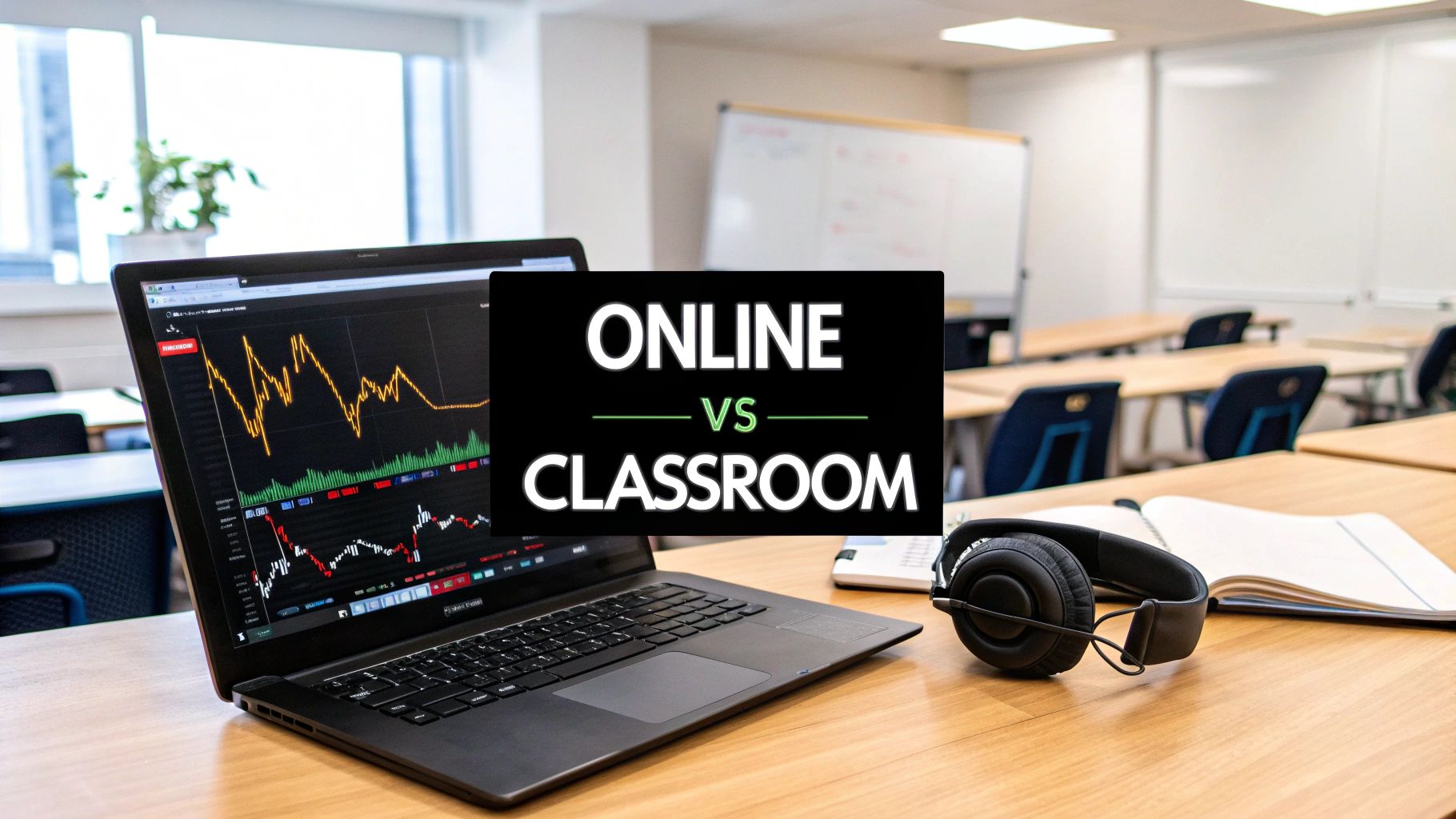Online Learning vs Classroom Trading Education
Choosing your path to trading mastery really boils down to this: online learning gives you incredible flexibility and a massive pool of resources, while the traditional classroom offers structured, in-person accountability. The right choice depends entirely on your personality—do you thrive with self-directed study, or do you need that face-to-face interaction to stay on track?
The Trader's Modern Learning Dilemma
Deciding how to learn trading is the first critical trade you'll ever make. The old debate of online versus classroom learning has heated up now that digital platforms are so much more than just simple video lectures.
The real question isn’t just about convenience. It’s about which environment will actually forge the discipline, skill, and psychological toughness you need to succeed in the markets. This decision directly shapes how well you'll master complex strategies like price action, which demand both deep knowledge and serious screen time.
Key Learning Environment Differences
To make a smart choice, you have to look at how each format stacks up on the things that matter most. What works perfectly for one trader might be a total disaster for another, depending on their lifestyle, budget, and how they learn best.
| Feature | Online Learning | Classroom Learning |
|---|---|---|
| Pacing | Self-directed; learn at your own speed | Fixed schedule; instructor-led pace |
| Accessibility | Global access with an internet connection | Geographically limited to venue location |
| Interaction | Asynchronous (forums) & synchronous (webinars) | Direct, immediate face-to-face feedback |
| Cost | Generally lower tuition; no travel costs | Higher tuition, plus travel and lodging |
| Materials | On-demand videos, simulators, digital resources | Physical handouts, live lectures |
Why Modern Traders Lean Online
For a lot of people getting into trading today, the data points clearly toward a digital-first approach. Research shows that students can retain 25% to 60% more material when learning online, a huge jump from the 8% to 10% retention rates seen in typical classrooms.
Why the massive difference? It's simple. Online platforms let you hit rewind and go over complex topics again and again until they click. That’s a game-changer when you're trying to burn intricate price action patterns into your brain. In a field where every little detail counts, that kind of efficiency is a powerful edge.
For those just starting out, our beginner trading course is built specifically to use these online advantages, helping you build a rock-solid foundation from anywhere in the world.
Comparing the Core Learning Environments
When you're trying to decide between learning to trade online versus in a classroom, you’re looking at two fundamentally different worlds. It’s not just about where you sit; these are distinct environments built on opposing ideas about access, interaction, and how information is delivered. Figuring out which one clicks with you is the first real step in shaping your trading journey.
Online learning for traders really breaks down into two camps. First, you have asynchronous learning, which is just a fancy way of saying you get pre-recorded videos, PDFs, and simulators that you can access whenever you want. This self-paced approach is a lifesaver if you're trying to fit trading education around a full-time job. Then there's synchronous learning, which involves live webinars and real-time group sessions. You get that direct interaction but without having to travel.
On the other hand, classroom learning is all about structure. It's the traditional, instructor-led model where you get immediate, face-to-face feedback and can network with other traders right there in the room. The pace is set for you, which is great for accountability, but it doesn't leave much wiggle room. This works wonders for people who thrive on that direct engagement and guided experience.
Online vs Classroom Learning At a Glance
To cut to the chase, let's lay out the core differences. This table gives you a quick snapshot of how each model operates, which will help you see where your personal learning style might fit best.
| Feature | Online Learning | Classroom Learning |
|---|---|---|
| Pacing | Self-directed and highly flexible; learn at your own speed. | Fixed schedule; everyone follows the instructor's pace. |
| Accessibility | Global access with a stable internet connection. | Geographically limited to a specific venue and schedule. |
| Interaction | Asynchronous (forums, email) and synchronous (webinars). | Direct, immediate, face-to-face feedback and discussion. |
| Structure | Modular and adaptable to individual learning styles. | Linear and highly structured from start to finish. |
Each path has its place, and the right one depends entirely on what you need. For example, the Colibri Trader online trading academy is built around a self-paced structure. This is perfect for mastering something complex like price action, where repetition is key—something a classroom with a fixed schedule just can't offer in the same way. At the end of the day, the best environment is the one that removes the most friction from your path to becoming a better trader.
Analyzing the Critical Factors for Trader Success
A successful trading education isn't about memorizing patterns; it’s about applying skills when the pressure is on. When we're looking at online learning versus a traditional classroom, we have to go deeper than just a simple pros-and-cons list. We need to dissect the factors that actually make a difference in a trader's real-world performance—things like flexibility, quality of feedback, community, and how well you can apply what you've learned.
The infographic below really breaks down how these different factors stack up in both learning environments.
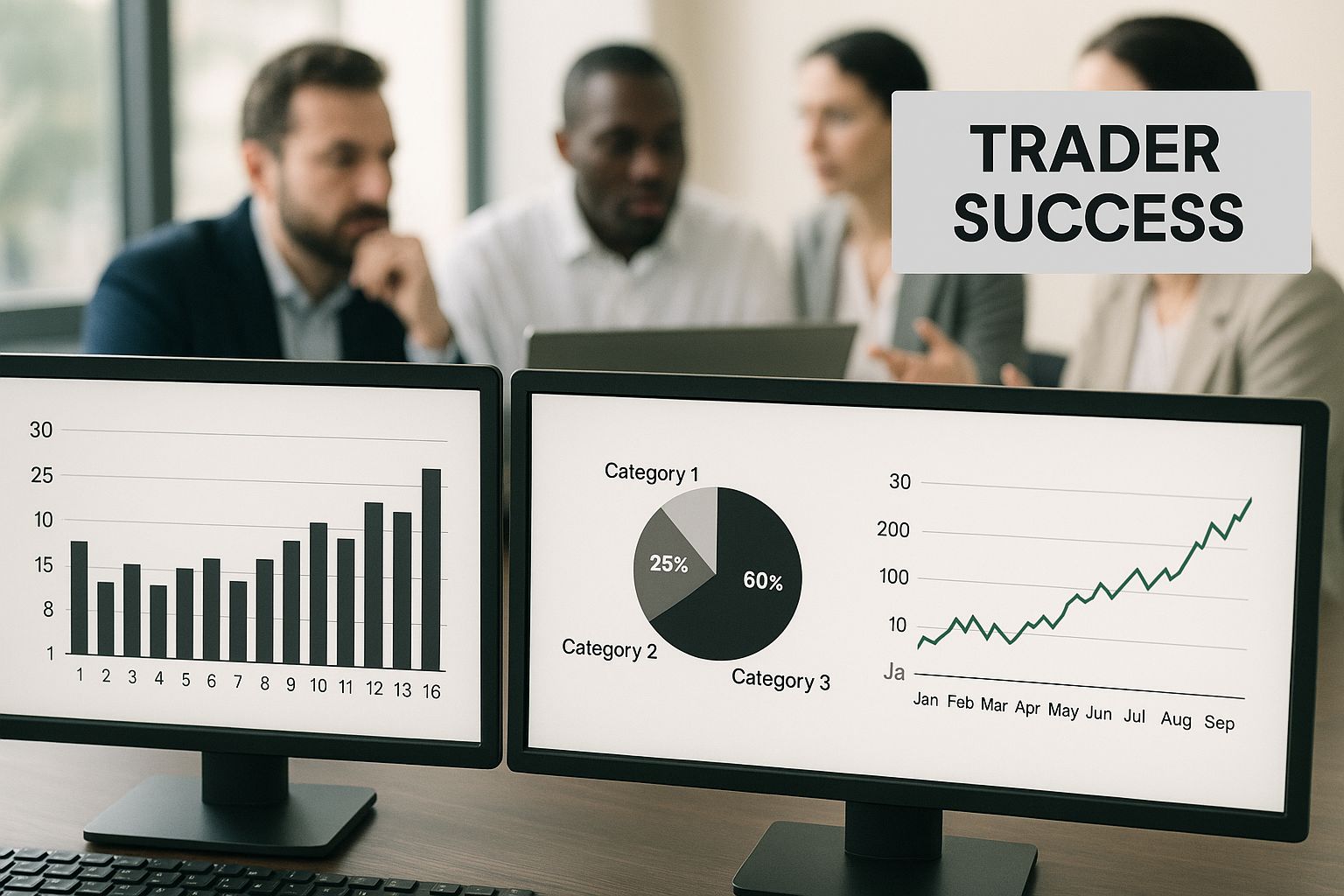
What you'll notice is the critical balance between learning at your own pace and getting that collaborative feedback. It’s an area where both online and classroom models have their own distinct advantages.
Flexibility and Pacing for Modern Lifestyles
For most people trying to learn trading, life doesn't just stop. This is where online learning really shines, offering unbeatable schedule adaptability. You can fit your study sessions around a full-time job, family, or different time zones. Plus, you can replay a lesson on a tricky price action setup over and over until it finally clicks—a luxury you just don't get in a classroom with a fixed schedule.
A classroom, on the other hand, locks you into a rigid timetable. While that structure might work for some people who need that external push, it's often totally impractical for working professionals. The right choice here really comes down to your own self-discipline and what your daily life looks like.
Instructor Interaction and Quality of Feedback
There's no substitute for direct access to an experienced mentor. In a traditional classroom, you can get that immediate, face-to-face feedback. You raise your hand, ask a question, and get a nuanced answer on the spot. It's direct and personal.
But online platforms have come a long way. Good courses now offer structured support through live Q&A sessions, detailed email responses, and active community forums where instructors are constantly participating. This creates a massive, searchable library of answered questions, so you can learn from other traders' problems without having to ask yourself. The feedback might not be instant, but it's often more thorough and you can access it whenever you need it.
Key Takeaway: The quality of feedback is less about the medium (online vs classroom) and more about how committed the program is to supporting its students. A well-run online course can offer deeper, more accessible mentorship than a crowded, impersonal seminar ever could.
Peer Networking and Collaborative Learning
Trading can be a lonely game, which makes having a strong network of peers absolutely essential for your long-term growth. Classrooms are a natural breeding ground for these connections through group exercises and those informal chats during coffee breaks. Sometimes the most powerful insights come from these spontaneous conversations.
Online communities, however, offer a completely different kind of collaboration. They connect you with a global network of traders from all sorts of backgrounds and experience levels. This digital setup provides a constant stream of market analysis, shared trade ideas, and support that goes far beyond the four walls of a classroom.
Practical Skill Application and Bridging the Theory-Practice Gap
At the end of the day, your success hinges on one thing: your ability to execute trades in a live market. Both learning models have to bridge that gap between theory and practice. A classroom might run simulated trading sessions, but they're always limited by time and the instructor's schedule.
This is an area where online learning often has the edge. It can seamlessly blend educational content with practical tools like trading simulators and backtesting software. You can learn a price action concept and then immediately go practice it for hours on your own time, which drastically speeds up your screen time and pattern recognition skills. We've seen this play out in the numbers, too. Back in Fall 2015, traditional courses had a 69% success rate compared to 60% for online. By Fall 2019, that gap had shrunk to just 3% as online platforms got better and better. You can read more about the evolution of online learning success rates on entrepreneurshq.com. It just goes to show how effective technology has become at helping traders apply their skills.
The True Cost and Accessibility of Learning to Trade
Before you commit to any trading course, you have to look past the sticker price. The true cost of education is rarely just the tuition fee, and the hidden expenses are where the real difference between online and in-person learning becomes obvious.
Think about a traditional classroom seminar. The course fee is your entry ticket, but it's just the start. You've still got to factor in flights, hotels, meals, and maybe even unpaid time off work. These add-ons can easily double or triple the initial investment, turning a reasonable cost into a major financial commitment.
This is exactly where online learning changes the game. By cutting out travel and accommodation, the barrier to entry drops dramatically. It opens up high-level trading education to a much wider group of aspiring traders.
Breaking Down the Financial Comparison
Let’s be blunt: the financial gap between the two options is huge. Online courses are often 20% to 40% cheaper right off the bat. But the real savings come from avoiding the big-ticket items like housing, which can add $10,000 to $15,000 to your annual expenses, not to mention transportation.
- Classroom Costs: High tuition fees plus flights, hotels, food, and lost income from taking time off.
- Online Costs: A more affordable tuition fee, a decent computer, and a stable internet connection.
Sure, you might need a reliable computer for online learning, but most of us already have one. It's typically a one-off expense that pays for itself over and over, making it the far more sensible choice long-term. If you're looking to start without a big financial splash, resources like free online stock trading courses are a fantastic place to begin.
Accessibility Beyond Finances
Accessibility isn't just about what's in your bank account; it's about opportunity. Online platforms have completely democratized trading education. They've torn down the geographical walls that once locked people out unless they lived near a financial center like London or New York.
Now, a trader in a small town or a professional with a demanding job has the same access to expert coaching as anyone else. It levels the playing field. The only thing you need to bring is your commitment to learning.
The real value of online trading education is its ability to fit powerful market knowledge into your life, not force you to rearrange your life around it.
This kind of flexibility means you can master complex methods, like price action, completely on your own schedule. For instance, our library of free online trading lessons gives you foundational skills you can access anytime, anywhere. You build your expertise without putting the rest of your life on hold, giving you total control over your journey to becoming a trader.
Which Trading Education Path Fits Your Life?
The old debate of online versus classroom learning isn't about which one is flat-out "better." The real question is, which one is better for you? The right path comes down to your life, your goals, and your schedule. Instead of talking in circles, let's look at a few real-world scenarios.
I've seen traders fall into a few common profiles over the years. See which one sounds the most like you, and you'll have a much clearer idea of where to go next.
The Full-Time Professional
This is the trader working a demanding 9-to-5. Their free time is limited and, more often than not, completely unpredictable. Committing to a rigid class schedule is impossible, but they're incredibly motivated to build a new skill in the evenings or on weekends. For them, flexibility is everything.
Online learning is the undisputed champion here. There's just no substitute for being able to access lessons on your own time, re-watch a tricky price action setup, and jump into a simulator at midnight. A traditional classroom, with its fixed hours and commute, would be a non-starter.
The professional's greatest advantage is self-discipline. Online education rewards this trait by letting them learn and practice without blowing up their career or family life.
The Aspiring Day Trader
This person is all in. They're ready to treat trading education like a full-time job and want to get up to speed as fast as possible. They thrive on structure, want immediate feedback, and are keen to network with other people who share their intense focus. The goal is total immersion.
An intensive, high-quality classroom seminar could be a great option. That kind of environment provides accountability and direct, in-person access to instructors. But here's the thing: a well-designed online program with live webinars and an active trading community can give you much of the same experience—without the massive cost and travel headaches. It’s often the best of both worlds.
The Niche Strategist
This trader isn't a total beginner. They've probably dabbled in different strategies with so-so results and now want to master a specific methodology, like pure price action or supply and demand. They're looking for a proven, indicator-free approach. Their goal is specialized expertise.
For the strategist, the depth and focus of the material are what matter most. This is where online platforms really shine, offering deep-dive courses that focus on one thing and one thing only. You can learn a specific setup, practice it for hours, and get feedback from a community all focused on the exact same strategy. For traders looking for a focused entry point, resources on topics like cryptocurrency trading basics for beginners can build a solid foundation in a specific niche. This kind of targeted learning is far more powerful than a general classroom course that might only spend a few hours on your chosen specialty.
Making Your Final Decision with Confidence
Picking between online and in-person trading education is really your first strategic trade. There’s no single “right” answer here—it’s entirely personal. To choose wisely, you've got to be brutally honest about your own habits, personality, and what you have going on in your life.
First, take a hard look at your self-discipline. Do you have the inner drive to actually sit down, follow a schedule, and get through the lessons without a teacher looking over your shoulder? If that sounds like you, then the freedom of online learning is a massive advantage. But if you know you work better with a bit of external pressure, a structured classroom could be what keeps you on track.
Aligning Your Choice with Your Goals
Next up, what are you actually trying to achieve here, and what’s your budget? Are you looking to become a specialist in a specific methodology like price action, or do you just need a broad, general overview of the markets? Online courses are often laser-focused, offering a depth of content on one topic that a general seminar just can't touch.
From a financial standpoint, online education is almost always the lighter lift. You completely cut out the costs of travel, hotels, and time off work.
The best educational path is the one that removes the most friction from your journey. It should fit into your life, not force you to rebuild your life around it.
Finally, think about how you genuinely learn best. Do you get the most out of re-watching videos, pausing, and taking notes at your own pace? Or does the information stick better when you're in a live discussion, asking questions and hearing from others in real-time?
Your final decision should feel like a natural extension of your personality, your resources, and your trading ambitions. The best choice is simply the one that gives you a solid trading framework and the confidence to actually use it in the live markets—that's what paves the way to consistent results.
Frequently Asked Questions
When you're weighing online learning against a traditional classroom for trading, a few key questions always seem to pop up. Let's tackle them head-on to help you figure out the best path for you.
Is Online Learning as Effective for Complex Topics Like Price Action Trading?
Honestly, for many traders, it’s even more effective. Think about it: Price action trading isn't something you just "get" after hearing it once. It takes repetition and hours staring at the charts.
Online courses let you re-watch tricky lessons as many times as you need. You can pause a video on a complex setup, pull up your own charts, and see it play out in real-time. This self-paced approach, combined with practice simulators, is perfectly built for the kind of screen time and repetition that success in price action demands.
How Can I Stay Motivated with an Online Trading Course?
This is a big one. Without a scheduled class to show up for, the discipline has to come from you. The trick is to create your own structure.
Set a non-negotiable study schedule, carve out a specific space where you only focus on trading, and give yourself clear, achievable goals for each week. Even better, jump into the course's community forum. It’s the online version of a study group—you get accountability, support from other traders, and a way to stay connected to the material.
In most cases, online learning is as effective as a traditional classroom setting, but it offers unmatched benefits for students studying part-time or from a distance. The flexibility to complete classwork when it is most convenient is a major advantage for adult learners.
What Are the Biggest Downsides of Classroom Trading Seminars?
The main drawbacks really come down to three things: the high cost, the rigid schedule, and the one-size-fits-all pacing. Seminars have to cover venue rentals and instructor fees, so they're naturally more expensive.
Their fixed schedules are also tough if you have a job or other commitments. Plus, the pace is set for the middle of the room—it might be too fast for you to truly grasp a concept or painfully slow if you're a quick study. It's just not an efficient way to learn.
Online learning flips all of that on its head:
- Cost Efficiency: You're not paying for travel, hotels, or expensive lunches.
- Total Flexibility: You can learn at 2 AM or on your lunch break. Your schedule is the only one that matters.
- Personalized Pacing: Need to hear something again? Just hit rewind. Already know it? Skip ahead. You control the speed.
At the end of the day, the right choice really boils down to your personal learning style and what your life looks like right now.
Ready to master price action on your own terms? Explore the flexible, in-depth courses at Colibri Trader and start your journey toward consistent profitability today. Visit https://www.colibritrader.com to learn more.

